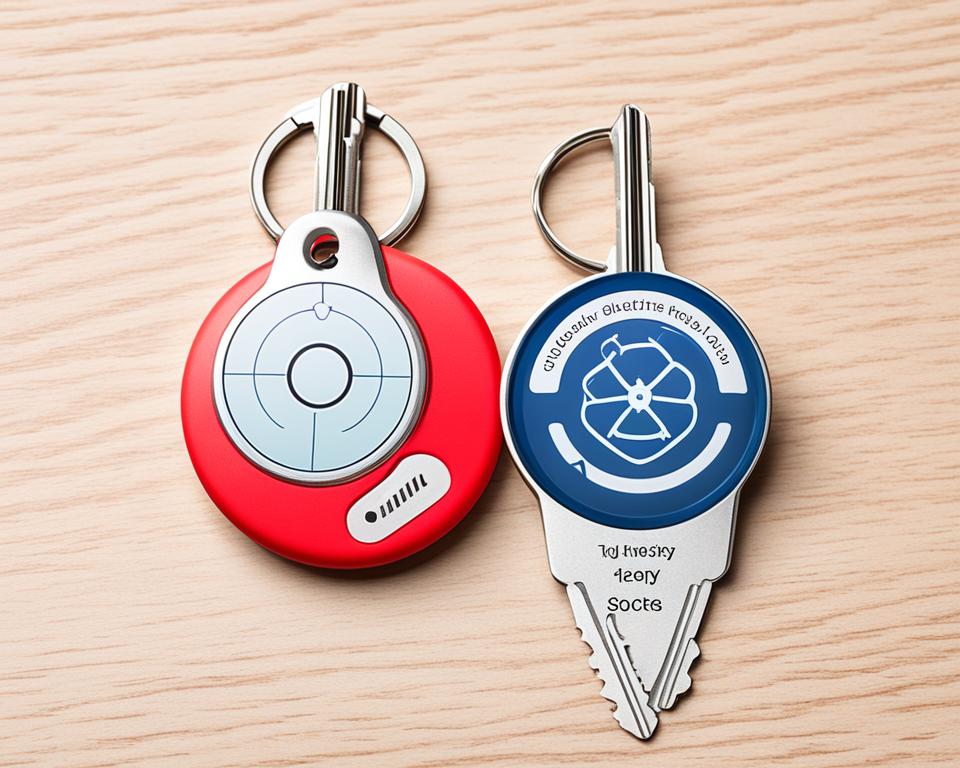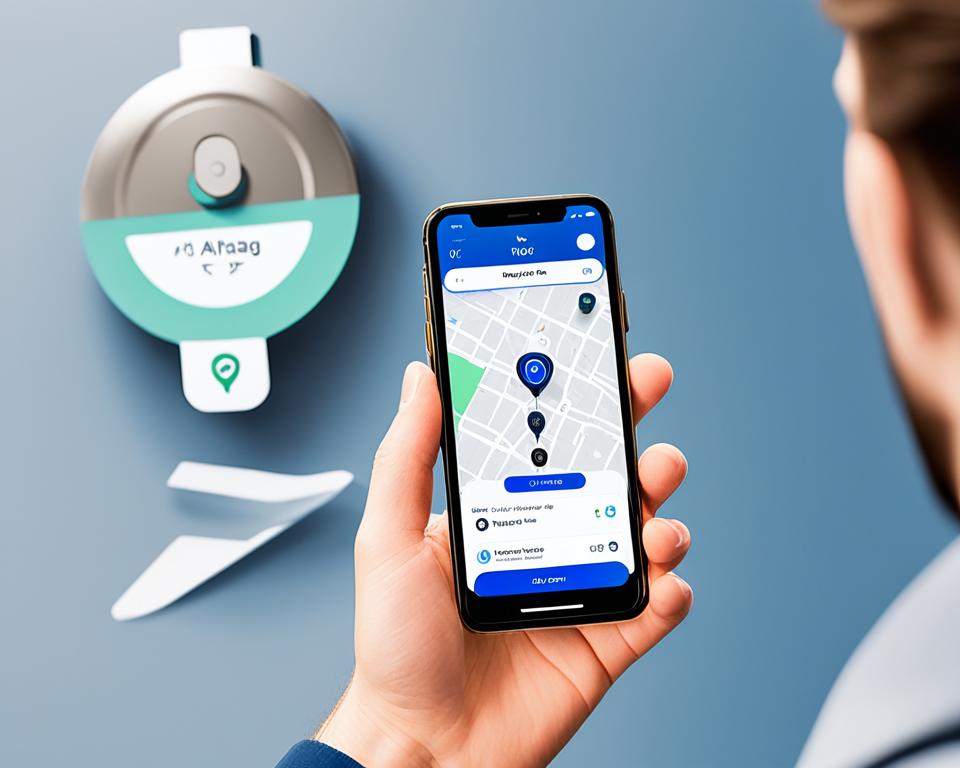
Have you ever wondered how a tiny device like the Apple AirTag can help you track belongings and even ensure privacy protections? This small, coin-shaped gadget, weighing just 0.39 ounces and measuring 1.26 inches in diameter, is engineered by Apple to make finding misplaced items like wallets effortless. But how does it achieve this?
The AirTag leverages a combination of clever features and advanced technology to operate seamlessly within the Apple Find My network. By utilizing a Bluetooth signal detected by nearby iOS devices, it relays the item’s location to your iCloud, ensuring the data exchange is anonymous and encrypted. This connectivity is bolstered by an Apple-designed U1 chip for Ultra-Wideband, allowing Precision Finding—a feature that directs you towards your misplaced item with pinpoint accuracy.
Even better, AirTags integrate with Siri for voice commands like “Hey Siri, find my wallet” and can play a sound through an inbuilt speaker to aid in locating your items. Designed with privacy in mind, any unwanted AirTag that moves with you will send an alert, safeguarding against tracking misuse. Moreover, you can easily put it into Lost Mode by using the NFC tap feature, which facilitates secure recovery.
Despite its advanced capabilities, the AirTag remains environmentally friendly, with 100% recycled tin in its main logic board and other eco-conscious materials. With an IP67 rating for water and dust resistance and a user-replaceable CR2032 coin cell battery, the AirTag is both durable and practical for everyday use.
In essence, the Apple AirTag is a powerhouse of technology and design, crafted to enhance the ease of tracking your treasured items while ensuring robust privacy protections. Ready to discover more about its functionalities and how it can serve your needs? Dive into our detailed review and let the innovations of AirTag simplify your daily life.
What is an Apple AirTag?
![]()
The Apple AirTag is a compact, disk-shaped Bluetooth tracking device designed to help users locate their personal items, such as keys, wallets, backpacks, and even pets. With a size of 1.26 inches in diameter and a height of 0.31 inch, the AirTag weighs just 0.39 ounces, making it easy and convenient to attach to any item.
Utilizing the Find My network, this personal item locator leverages the extensive network of iOS devices to track and pinpoint the location of missing belongings without the need for GPS. Each AirTag connects exclusively to a single Apple ID, ensuring robust privacy and security for the user.
Connectivity is a breeze with Bluetooth for proximity finding and the Apple-designed U1 chip for Ultra-Wideband, which enables Precision Finding. Additionally, the AirTag features NFC for easy Lost Mode activation. Boasting an IP67 water resistance rating, the device can withstand being submerged in up to one meter of water for 30 minutes.
The AirTag operates with a user-replaceable CR2032 coin cell battery, which typically lasts for over a year, making it a low-maintenance solution. For setup simplicity, users only need to remove a tab to activate the device and follow the on-screen prompts on their iPhone or iPad.
Among other notable features, the AirTag includes environmental considerations, being designed with 100% recycled tin in the main logic board’s solder and free from harmful substances such as mercury, BFR, PVC, and beryllium.
Personalization is possible with engraving options, and the included Find My app ensures compatibility with accessibility features like VoiceOver and Braille displays, providing comprehensive support for all users.
How much are AirTags?

The Apple AirTag price for a single unit is $29, making it an affordable choice for cost-effective tracking. For those looking to secure multiple items, Apple offers a value pack of four AirTags for $99, providing an economical option for extensive use.
Apple offers personalization with free engraving, allowing users to add letters or emojis to their AirTags, making each unit unique. This customization adds a personal touch, making it easier to identify each AirTag in the value pack.
To enhance functionality, Apple provides a range of AirTag accessories sold separately. These include keychains, loops, and luggage tags, designed to securely hold the AirTag on various items. These accessories not only add style but also ensure that your tracking device stays firmly attached to your belongings.
Are AirTags safe?

Apple AirTags are equipped with advanced AirTag privacy features to ensure user safety. If an unsuspecting user finds an AirTag that’s not registered to them, moving with them, the Find My app flags this with an alert. This unwanted tracking prevention mechanism is a cornerstone of AirTag’s design.
Another essential aspect of secure location tracking is that the AirTag privacy features include notifications after a random period between eight and twenty-four hours, alerting individuals if the same AirTag has been near them for an extended period. This approach helps minimize potential misuse such as cyberstalking. At Duke University, about 2-3 suspected cyberstalking incidents related to AirTags are reported monthly, with 1-2 confirmed annually, underlining the importance of these safety features.
AirTags use a public key and private key combination that changes frequently, making hacking attempts challenging. However, researchers like Tripp and his team have shown that skilled hackers could modify AirTags to create vulnerabilities, meaning continued vigilance and enhancements are necessary.
Apple encourages users to stay informed about unwanted tracking prevention by recognizing alerts indicating an AirTag is nearby, configuring notifications in the Find My app, and familiarizing themselves with the reporting process for found AirTags. Additionally, Android users are advised to install the “Tracker Detect” app to manually check for nearby AirTags.
Despite these concerns, AirTags have proven immensely beneficial for recovering lost belongings such as wallets, luggage, and gadgets. The secure location tracking of these devices, supported by a network of around 1.8 billion Apple devices, leverages unique Bluetooth identifiers that change frequently, fortifying the defense against tracking abuse.
How Does AirTag Work?

Apple’s AirTag is a marvel of modern device tracking technology, offering innovative ways to locate lost items. The combination of a Precision Finding feature and robust security protocols ensures that users can find their belongings with reliability and ease.
Bluetooth Connectivity and Ultra-Wideband Technology
The technology behind AirTag begins with a blend of Bluetooth connectivity and the Apple-designed U1 Ultra-Wideband chip. These elements work together to enhance Precision Finding, guiding users to their misplaced items with remarkable accuracy. When in close proximity, the Ultra-Wideband chip leverages spatial awareness to provide precise direction and distance.
The AirTag emits a secure Bluetooth signal detectable by nearby Apple devices in the Find My network. These devices relay the AirTag’s location to iCloud, ensuring seamless device tracking without compromising user privacy. Thanks to this comprehensive system, users can rely on AirTag for precise item recovery anywhere within the reach of the extensive Find My network.
Using the Find My App
The Find My app is the central tool for tracking AirTags. Once the Bluetooth signal from the AirTag is detected, the app displays the precise location on a map. This integrated approach utilizes robust security protocols to maintain user privacy, ensuring that location data and tracking information are encrypted and anonymous.
The app also provides additional functionalities such as playing a sound on the AirTag, enabling Lost Mode, and setting up location notifications. Users can access these features by tapping into the app’s well-designed interface, making it straightforward to manage and locate their AirTags effectively.
Setting Up and Using AirTag

Setting up your AirTag is a breeze with easy device pairing. Simply bring the AirTag near your iPhone or iPad, and follow the on-screen prompts to complete the AirTag setup. The intuitive integration with Apple device integration ensures you’re guided through the process with minimal effort.
To enhance the precision of tracking personal items, ensure Bluetooth is on and Location Services are enabled with Precise Location. It’s important to manage your items effectively in the Find My app, as you can add up to 32 items, including different types of AirPods.
If the setup animation disappears during the process, a quick solution is to sleep and wake your device, allowing 15 seconds for the animation to reappear. This facilitates easy device pairing and ensures the proper functionality of your AirTag.
Leveraging nearly one billion iOS devices globally, AirTags benefit from an extensive network. This makes the tracking personal items efficient and reliable, even on long trips. In events of persistent connection issues, simple troubleshooting steps, such as replacing the battery or resetting the AirTag, can resolve most problems.
Personalizing and naming your AirTag is also part of the setup process, offering customization for a more tailored experience. With the seamless Apple device integration, you can quickly engage Lost Item Mode and play sounds from the AirTag using the Find My app, ensuring you never lose track of your belongings.
How Does Apple Find Lost AirTags?

The AirTag recovery process leverages the extensive Find My network, a secure and anonymous web of hundreds of millions of Apple devices globally. When an AirTag is lost, nearby Apple devices detect its Bluetooth signal and send its location to iCloud. This crowdsourced location data ensures that even when an item is offline, its position can be updated.
To enhance AirTag recovery, users can activate Lost Mode. Doing so locks the AirTag with a passcode or Apple ID password and sends notifications when the AirTag is found. This mode allows the AirTag to provide contact details through an NFC tap while maintaining the integrity of privacy protections through encryption.
If your device has not sent its location for more than seven days, the Find My app will display “No location found.” However, erased devices running iOS 15 or later can still be located using the Find My network, making AirTag recovery more resilient. This capability may not be available on older versions, underscoring the importance of up-to-date software.
When lost, the crowdsourced location data from the Find My network provides a robust framework for AirTag recovery. Even if you have erased your device remotely, which removes sensitive information like Apple Wallet data, the Find My app can assist in locating it.
AirTag’s features, such as Notify When Left Behind, provide additional support for locating items, especially for MacBooks with Apple Silicon or devices covered by AppleCare+ with Theft and Loss. Utilizing these features can be pivotal for efficient AirTag recovery within the Find My network.
Can I See Devices Near My AirTag?

When it comes to *AirTag privacy assurance*, Apple’s technology is designed to prioritize user security. Utilizing almost two billion Apple devices, the Find My network is meticulously encrypted, ensuring that no *location data* or history is stored on the AirTag itself. This *device proximity detection* does not expose nearby devices to the owner, ensuring secure and private use.
Each AirTag sends an anonymous Bluetooth signal detectable within a 30-foot range by devices in the Find My network. This robust, *secure tracking technology* ensures your AirTag can be located without compromising the privacy of you or those around you. Even if an AirTag is separated from its owner, while it can be detected, *secure tracking technology* ensures no others can track it beyond this.
Can I Share AirTags Via Family Sharing?
![]()
Although AirTags offer remarkable tracking capabilities, sharing them via Family Sharing is restricted due to *AirTag single-account security*. Designed initially to link with a single Apple ID, this limitation ensures robust personal item tracking without unauthorized access or misuse. Apple recently introduced limited sharing features with the release of iOS 17, allowing users to share the location of AirTags within their families or trusted circles.
Up to six people can track the same AirTag; however, sharing is confined to direct permissions from the owner. This feature can be helpful for families managing shared items like car keys or common-use gadgets. But *Family Sharing limitations* mean precise steps must be followed to safeguard privacy. Only the original owner has the authority to revoke sharing permissions, maintaining a secure tracking system without potential breaches.
To share an AirTag, the owner must enable two-factor authentication, ensure both parties use their own Apple IDs signed into iCloud, and have iCloud Keychain activated. Upon sharing, a notification is sent to the borrower, confirming the change. If declined, the borrower’s details are removed from the list. It’s worth noting that recipients previously sharing an AirTag but no longer permitted can still receive movement notifications if the AirTag is nearby.
The exclusion from broad Family Sharing and the requirement for *AirTag single-account security* reinforce the focus on personalized, secure item tracking. This method ensures only authorized individuals can access location information, solidifying the AirTag’s role as a dependable personal item tracker within the Apple ecosystem.
Uses of AirTags

Apple AirTags offer a versatile solution for asset tracking and locating lost items. From ensuring your luggage reaches its correct destination during travel, to keeping track of everyday essentials like keys, wallets, and even pets, AirTag practical applications are vast. These small, disk-shaped devices measure just 1.26 inches in diameter and 0.31 inches in height, weighing 0.39 ounces, making them easy to attach to various items using specially designed holders like key rings and loops.
The durability of AirTags is another notable advantage, as they are water-resistant with an IP67 rating, allowing them to function even when submerged in up to 1 meter of water for 30 minutes. This feature is particularly useful for tracking items that may be exposed to various environmental conditions. For Apple device users running iOS 14.5 or later, AirTags seamlessly integrate into the ecosystem, enhancing the user experience.
An additional practical application is luggage tracking. By attaching an AirTag to your bag, you can monitor its location during transfers, providing peace of mind and ensuring that your belongings are on the right path. AirTags can also be used to find lost items such as parked vehicles, bikes, and even assist in theft recovery scenarios. Positioned at $29 each or $99 for a four-pack, AirTags provide a cost-effective tracking solution with their long battery life, averaging about a year with regular use and powered by replaceable CR2032 coin cell batteries.
Overall, AirTag practical applications extend beyond just finding lost items; they offer a comprehensive asset tracking solution that brings convenience, security, and peace of mind to Apple device users.
Which iPhones and OSes Work With AirTags?
AirTag compatibility hinges on having a device that operates on at least iOS 14.5 or iPadOS 14.5. Ensuring your iPhone or iPad meets these iOS requirements is crucial for seamless functioning. While the Find My app can be utilized on any compatible device, there are specific features that necessitate higher-level technology. For example, the Precision Finding feature, which aids in locating your AirTag with on-screen instructions, is only available on iPhones 11 and later models due to their U1 Ultra-Wideband chip.
Devices that work with AirTags include iPhone SE, iPhone 6S or later, iPod Touch 7th generation or later, iPad Pro 5th generation or later, iPad Air 2 or later, and iPad Mini 4. This broad range makes AirTags accessible to a majority of Apple users. Staying updated with the latest iOS versions ensures that you have access to the newest features and optimal performance when using AirTags.
To make the most of Precision Finding, users must have an iPhone 11 or newer. These newer models are equipped with the U1 Ultra-Wideband chip, ARKit, accelerometer, and gyroscope, all of which are integral to the Precision Finding feature. Not only does this enhance the accuracy, but it also offers an intuitive experience by guiding you directly to your misplaced item.
It’s important to note that while AirTags can be detected by a wide array of devices within Apple’s extensive network, utilizing them to their full potential requires meeting specific iOS requirements. Keeping your devices updated is essential for accessing the advanced features that AirTags offer.
How Far Away Can AirTags Be Tracked?
The AirTag operational range isn’t strictly limited by distance. Rather, it leverages the extensive Find My network, which includes nearly a billion Apple devices globally. Each AirTag broadcasts a Bluetooth signal that any device within the network can detect. This design eliminates the need for long-distance tracking capabilities, as the data is relayed through multiple networked devices, ensuring the item’s location is accessible regardless of the owner’s proximity.
Although Apple hasn’t precisely stated the Bluetooth signal strength range, it’s estimated to support Bluetooth 5.0, which covers approximately 30 feet. This shorter range is compensated by the vast Find My network, providing unmatched global tracking capabilities. Even in remote areas without immediate network coverage, the AirTag will update its last known location until it comes within Bluetooth range of another device.
This innovative use of networked Bluetooth signals, rather than traditional long-distance GPS tracking, sets AirTags apart. The integrated Precision Finding feature, available on iPhone 11 and later models with the U1 chip, provides unparalleled accuracy for nearby tracking, while the global network ensures no lost item is too far away to be found.
Do you have to charge an AirTag?
AirTags are designed with simplicity and convenience in mind, and one of their standout features is their maintenance-free tracking. Instead of regular charging, AirTags rely on a user-replaceable power source. This source is the widely available, circular CR2032 coin cell battery. With an estimated AirTag battery life of around one year, users can enjoy long periods of hassle-free tracking before needing a replacement.
When it’s time for a new battery, your iPhone will alert you, making the process even smoother. These CR2032 batteries can be easily purchased at numerous retailers. Thanks to this user-replaceable power source, maintaining your AirTag remains straightforward and cost-effective, ensuring that your tracking needs are consistently met.
Can you see an AirTag’s location history?
Apple’s AirTag prioritizes location data privacy and ensures that users cannot see a historical log of their AirTag’s locations. Unlike some tracking devices that keep a record of past movements, AirTag focuses on real-time updates. This design decision is intentional to enhance the security of item tracking, providing users with peace of mind regarding their privacy.
AirTag operates by sending a secure Bluetooth signal, detected by nearby Apple devices within the Find My network. This vast network, consisting of hundreds of millions of devices, helps track the AirTag when it’s far from its owner’s reach. The real-time data is then relayed to the Find My app, allowing users to see the current location of their AirTag without any historical data stored on the device itself.
In addition, Apple has embedded several privacy features within the AirTag to discourage unwanted tracking. If an AirTag is detected traveling with someone other than its owner, an alert is sent to the iPhone of that person. This approach ensures that the secure item tracking remains transparent and user-centric. By emphasizing secure and private location data management, AirTag aligns with Apple’s commitment to user privacy and security.








